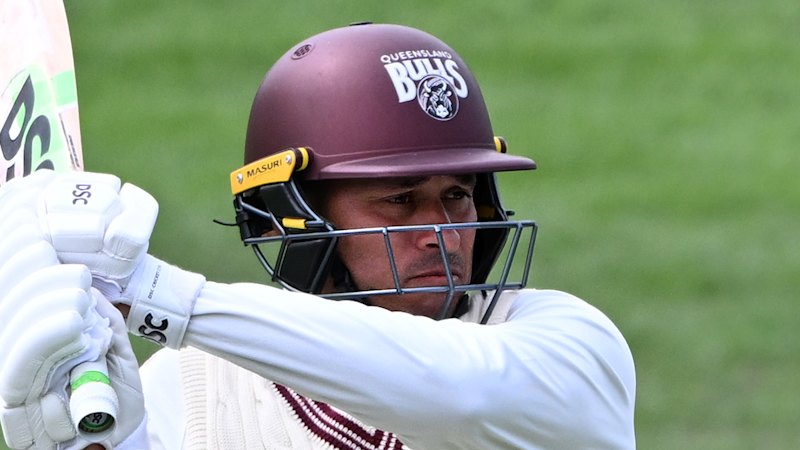
On a pivotal day at the Gabba, Usman Khawaja demonstrated his form with a solid innings, while fellow batsmen Matthew Renshaw and Marnus Labuschagne faced challenges during their final auditions ahead of the Ashes series. As Khawaja built his innings, scoring a half-century against New South Wales, paceman Ryan Hadley emerged as a potential thorn in his side, offering insights into England’s likely strategy for the upcoming matches.
Hadley, 26, started his spell with an aggressive short ball aimed at Khawaja, who was caught off guard. After New South Wales declared at 7-429, Hadley’s tactics included a series of deliveries that tested Khawaja’s technique. Although Khawaja has typically excelled against pace, Hadley’s approach raised questions about how he might handle the fast, short-pitched bowling expected from England’s Mark Wood and Jofra Archer.
Khawaja, who averages 24 against Wood and just 12 against Archer, faced a few anxious moments early in his innings. Hadley’s aggressive tactics included a no-ball that allowed Khawaja to edge towards slips, and two deliveries that tested his footwork. England’s bowlers are certain to have taken note of these moments, especially considering Khawaja’s struggles earlier this year against the West Indies, where he averaged just 19.5 across the series and faced dismissal from bouncers.
The strategy of targeting batsmen with pace and bounce is well-established in cricket, aiming to unsettle and induce mistakes. However, Hadley’s persistence seemed to wane as he attempted to shift his approach. Following an initial burst of short balls, Khawaja quickly adapted, executing a pull shot that signaled his intent. From that point, he capitalized on Hadley’s over-pitched deliveries, dispatching them to the boundary with ease.
As Khawaja reached 60 runs, it became evident that New South Wales lacked the express pace of England’s bowlers. While Khawaja’s pull shot is a notable strength, it often relies on timing rather than footwork. In contrast, Queensland’s Jack Clayton exhibited impressive backfoot movement when he faced New South Wales captain Jack Edwards, showcasing how speed and precision can exploit vulnerabilities in batting technique.
Khawaja’s age, soon to be 39 during the Ashes, raises questions about his future in the sport. The emergence of younger talents, such as 22-year-old Campbell Kellaway who recently scored a century against Tasmania, highlights the shifting landscape of Australian cricket. The pressure is mounting for Khawaja to prove he can withstand the rigors of international play against a formidable English attack.
Earlier, Renshaw’s Ashes audition started poorly, nearly resulting in a run-out on his first ball. He managed to settle in, scoring 29 runs before being bowled by Edwards. Labuschagne faced a similar fate, dismissed for just four runs by Liam Hatcher. Despite these setbacks, Khawaja and Renshaw formed a valuable 94-run partnership under challenging conditions, suggesting they could be viable options for the opener position against England.
As the Ashes series approaches, selectors will scrutinize the performances of Khawaja, Renshaw, and Labuschagne closely. With Hadley’s tactics serving as a potential blueprint for England, the upcoming matches promise to be a significant test for Australia’s seasoned batsmen.






